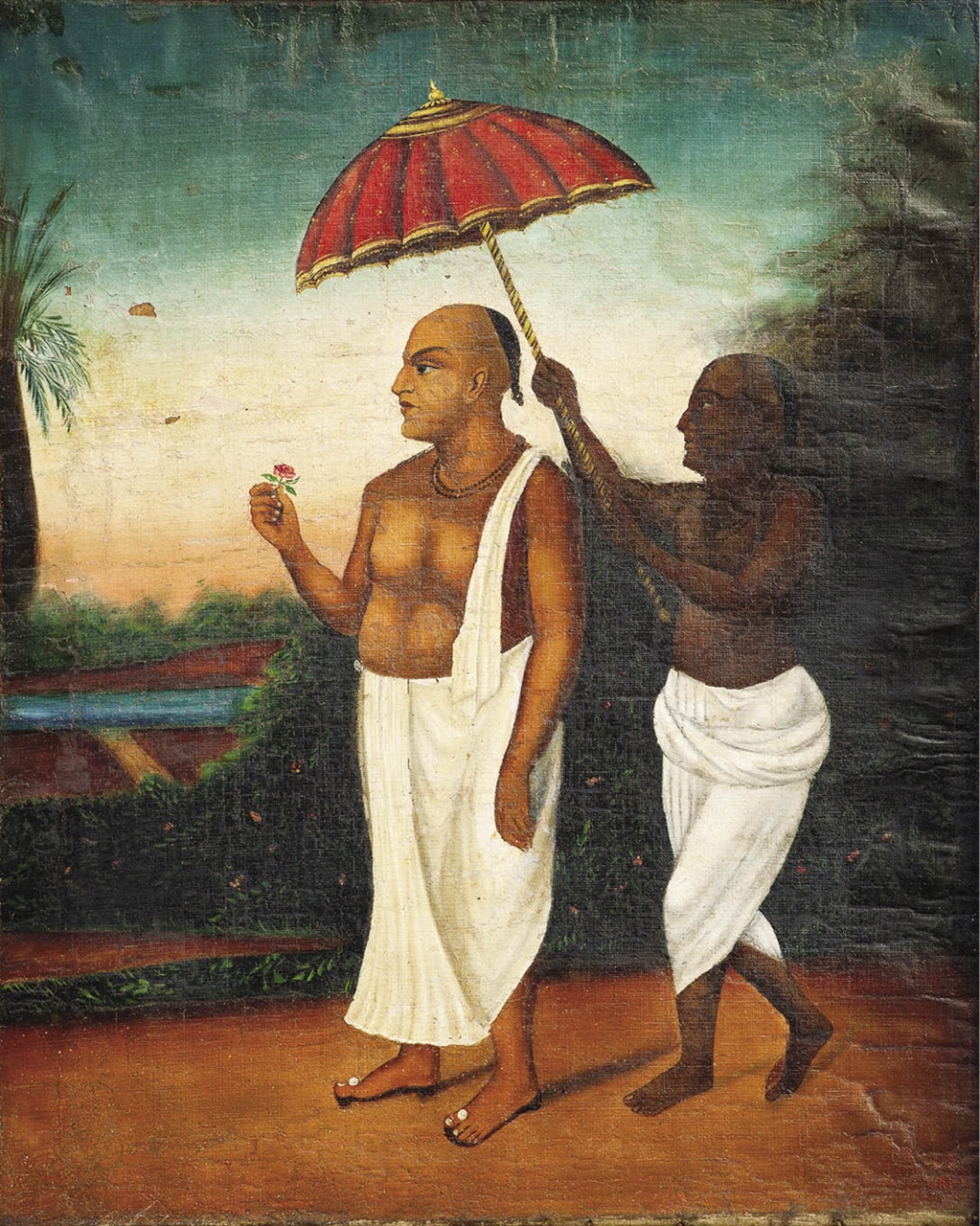![]() Significant Indian Paintings
Significant Indian Paintings
![]() Significant Indian Paintings
INDIAN SCHOOL, EARLY 20TH CENTURY
Significant Indian Paintings
INDIAN SCHOOL, EARLY 20TH CENTURY
Lot: 7
Lot Closed
INDIAN SCHOOL, EARLY 20TH CENTURY
ASN0007 Auction Type: Live Floor
Maharaja Nabakrishna Deb, with an attendee carrying an umbrella, on the banks of the Hoogly river
Oil on Canvas
Signed lower right 31/8/1901 (artist’s name indecipherable)
Dimension: 74 x 59 cms.
R 9,00,000 - R 11,00,000
RELATED LOTS
CONTACT US
Catalogue & Viewing
Lot Closed
Accounts & Shipping
Lot Closed
-
Provenance
 Provenance
Provenance
From the descendants of Maharaja Deb
Acquired by the current owner in the 1980’s from the Royal Family
-
Literature
 Literature
Literature

Nabakrishna Deb (1733 – 1797)
Better known as Raja Nabakrishna Deb, founder of the Shovabazar Raj family, Nabakrishna Deb was instrumental in a plot against Nawab Siraj-ud-Daula. He is known for the Durga Puja he organised in the newly constructed Shobhabazar Rajbari (king’s palace) in Kolkata (then Calcutta) in 1757, his patronisation of numerous performing artistes and his philanthropy.
Nabakrishna Deb lost his father, Ramcharan Deb, early in life but his mother took care to ensure that he learnt Urdu and Persian initially and later Arabic and English. Deb was appointed Persian teacher of Warren Hastings in 1750. At one point of time he was munshi (clerk-cum-interpreter) of Governor Drake, advised the British on foreign relations and was a great support for the establishment of British power in India. He had carried out confidential work for the British East India Company, prior to and during the Battle of Palashi. After the death of Siraj ud-Daulah, Deb along with Mir Jafar, Amir Beg and Ramchand Roy earned eight crore rupees worth of treasures from the secret treasury.
With Lord Clive backing him, Deb earned the title of ‘Maharaja Bahadur’ in 1766. The position offered him some administrative powers also. Later he became a political banyan (a powerful middleman) of the British East India Company. When Warren Hastings took over as governor (Governor General of Fort William in Bengal) in 1772, he became even more powerful. In 1776, he earned the talukdari (landholder with peculiar tenure) of Sutanati.
He created a sensation in those days by spending Rs. 10 lakh (1 million) for the sraddha (the last rites ceremony by Hindu tradition) of his mother, feeding the poor, honouring the learned, and doing everything on a grand scale. He constructed the 50 km (31 mi) road from Behala to Kulpi (presently in South 24 Parganas district) in what was then jungle territory.
He organised a conference of learned men in his Rajbari and patronised many musicians. Harekrishna Dirghangi, Nitai Baisnab and other kabials enjoyed his hospitality. He donated to different causes irrespective of religious denominations. He gave money to start the Calcutta Madrasa, donated land for St. John’s Church and earned a reputation as a philanthropist.



